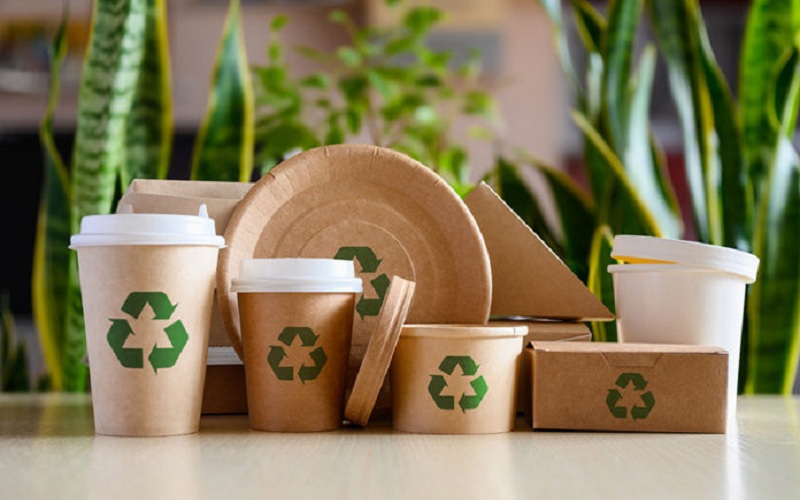Paper cups have become one of the most often used food packaging materials worldwide. Paper cups, whether for coffee, soup, or other on-the-go snacks and beverages, are a practical and cost-effective solution for both companies and consumers. However, the large amount of paper cups discarded every day has sparked legitimate environmental concerns. Paper cup manufacturers can help solve these concerns and migrate to more sustainable food packaging materials alternatives.
Selecting the Best Materials
One of the most important methods for paper cup suppliers to contribute to sustainability is to source materials sustainably. Traditional paper cups are created from wood fibers, which necessitates the harvesting of a vast number of trees. In their paper cups, however, several suppliers are now employing recycled or FSC-certified fibers from sustainably managed forests. Deforestation’s environmental impact is reduced as a result. Some vendors have also begun to include post-consumer recycled content in their cups. This saves landfill space and decreases the need for fresh materials. One choice consumers and businesses can make to assist sustainability is to use paper cups with a higher recycled content.
Designing for Recycling
The design of buy paper cups influences how recyclable or compostable they are after use. Paper cup manufacturers play a critical role in developing designs that make cups easier to recycle or compost. Using plastic-free linings that degrade naturally and avoiding numerous material combinations that are difficult to separate during recycling procedures are two significant design concerns. Suppliers are also looking into new cup designs with minimum plastic or wax coatings to avoid contaminating recycling processes. When possible, consumers should seek out paper cup brands that stress recyclable and biodegradable construction.
Providing Alternate Materials
While paper is still the most commonly used material for hot food and drink cups, some providers are expanding their product ranges to include more environmentally friendly alternatives. Cups manufactured from plant-based materials such as bagasse (sugar cane fiber), bamboo, and corn are examples. Cups created from these renewable resources are less harmful to the environment than those made from wood fibers. Compostable plastic and bioplastic cup choices are also available from suppliers. These are made of plastic, but they degrade naturally without releasing dangerous chemicals. Having a variety of material options helps businesses to select the best environmentally friendly solution based on their requirements.
Collaboration for Reuse and Recycling Programs
When paper cups are discarded, they must end up in reuse, recycling, or composting processes rather than landfills. Suppliers of paper cups are collaborating with waste management firms, municipalities, and major organizations to establish dedicated collection programs. It includes prominently labeled recycling bins as well as informative posters. When cups are returned for recycling, several suppliers provide rebate programs in which a portion of the purchase price is reimbursed. This type of collaboration helps to shut the loop and divert valuable items from becoming waste. It is a joint effort by suppliers, customers, and waste handlers.
Investing in Emerging Technologies
Looking ahead, paper cup manufacturers are heavily investing in research and development of new eco-friendly solutions. It includes developing cutting-edge fiber recycling technology that can break down discarded paper cups into their original fiber components, which can then be remanufactured into new items. Some researchers are investigating revolutionary cup designs built from renewable, compostable materials that do not require plastic linings. Suppliers are also working on novel manufacturing processes such as renewable energy, zero waste manufacturing, and carbon offset programs. Continuous technical improvement is required to make paper cups and their production more environmentally friendly in the long run.
Promoting Reusable Cup Sharing Programs
Some paper cup suppliers are pioneering reusable cup share schemes in addition to increasing the sustainability of single-use cups. Customers can borrow a reusable cup and return it for cleaning and re-use. The logistics of collecting, cleaning, and redistributing reusable cups are handled by suppliers. Customers simply pay a small deposit charge each time they visit and avoid using throwaway mugs. Some organizations even provide incentives and awards for many reuses. Reusable cup sharing reduces waste from disposable cups. Suppliers gain from reduced raw material requirements as well. With proper incentives and convenient access locations, such initiatives have the potential to drastically reduce single-use cup consumption over time.
Collaboration with Startups and Innovators
Paper cup manufacturers understand that sustainable innovation does not occur in isolation. Some are actively collaborating with entrepreneurs and inventors to create innovative eco-friendly packaging solutions. It includes investing in firms that are pioneering the development of novel bio-based and biodegradable materials. It also entails working with innovators to develop smart reusable cup technology. Suppliers help new solutions scale by providing research support, program funds, manufacturing capabilities, and distribution channels. In exchange, they obtain early access to cutting-edge concepts that have the potential to alter their product lines. Such open innovation collaborations hasten the shift to circular business models in the packaging industry as a whole. It guarantees that paper cup suppliers remain at the forefront of producing the most environmentally friendly solutions.
Customers and Public Suppliers play a significant educational role by explaining to customers the sustainable qualities of their paper cups and programs. It includes emphasizing how their paper cups are responsibly sourced, and engineered for recyclability, and how post-use collection programs operate. Some suppliers make thorough sustainability reports and impact measurements available. Educating businesses and the broader public about concerns such as single-use waste helps to create awareness. It promotes the use of reusable alternatives whenever possible, as well as the correct disposal of single-use items. Suppliers who provide customers with information are critical to generating meaningful change.
Conclusion
To summarize, suppliers of paper cups have tremendous potential and obligation to improve sustainable packaging alternatives. They may have a significant beneficial influence by sourcing sustainably, inventing designs, offering alternative materials, cooperating on reuse programs, investing in new technology, and educating customers. Individuals and organizations could also encourage suppliers to prioritize sustainability when purchasing paper cups. To move to a circular economy for paper cups, suppliers, buyers, waste handlers, and legislators will need to work together. If done correctly, paper cups can continue to play an important part in food and beverage packaging while lowering their environmental impact.





